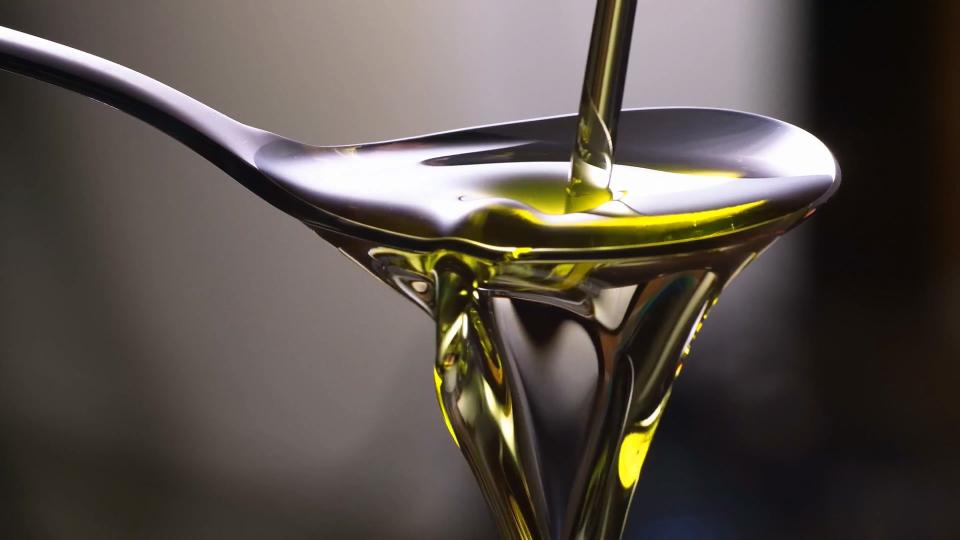Why Australian Olive Oil Is Some of the Best In the World
Licorice and sharks come to mind when I think of Australia. Extra virgin olive oil, not so much—but, as I recently learned, it should.
Shopping for olive oil is confusing, so we asked the pros about their favorites. Here's what chefs and food experts turn to as their go-to fat.
Australian olive oil has taken the international olive oil competition circuit by storm. It's such good stuff that Larry Olmsted, author of Real Food Fake Food who has written extensively about counterfeit olive oil, says if he had to choose an oil based on nothing other than where it's from, his first choice would be Australian.
We've talked about how you can find good-quality EVOO in general. Here's why you can trust what's coming from the fine folks Down Under.
Modern techniques mean fresh oil
Australia is like the hoodie-wearing tech startup guy in a roomful of suits. A relatively new player in the global olive oil market, the country has become known for its pioneering production methods.
Forget the idyllic notion of workers hand-picking olives at peak ripeness (absolutely a good thing, but also extremely rare). Australia's olive oil producers are all about "intensive layouts of olive groves, modern irrigation and farm management practices, mechanized harvesting, and advanced milling technologies," according to a 2013 report by the U.S. International Trade Commission.
Most growers also have their own mills and bottling facilities, which allows them to press their olives within 24 hours—but often "much quicker" than that, says Lisa Rowntree, a spokeswoman for the Australian Olive Association, which represents the country's olive growers.
It all adds up to a pure, super-fresh product that just might be the world's best olive oil. "If you produce good olives and harvest them quickly, you can't go wrong," Rowntree wrote me via e-mail.
Strict rules leave little room for imposters
Like the rest of us, Australia has had to deal with subpar oil parading around as the real thing. What the Australian Olive Association did about that in 2011—namely, put in place what Olmsted and other experts say are the strictest standards for what can be called extra virgin olive oil—is what sets their EVOO apart.
Olive oil grading standards set by the Madrid-based International Olive Council are considered the industry benchmark, but while they require lab analysis and sensory tests, they've been criticized for being too broad and inadequate in determining factors like the age of an oil.
The Australian Standard for Olive Oils and Olive Pomace Oils—AS5264-2011 for short—goes above and beyond the IOC's by requiring, among other things, two additional chemical tests not used elsewhere that detect freshness, quality, and whether an oil's been cut with cheap or old oil.

Olive Oil Pouring into Spoon
The DAG test, which Olmsted calls "the most sophisticated chemical analysis for freshness," measures the ratio of compounds called diacylglycerols that change with age, heat, and/or the refining process. The PPP test measures the degradation of chlorophyll in the oil, which happens steadily with age but can be manipulated with high heat, say, in the refining process.
AS5264 also bans the use of misleading label terms such as "pure" and "light," requires a "best before" date less than two years from when an oil was bottled, and calls for random testing of olive oil at the retail level "in order to capture the degradation that naturally occurs over time," according to the International Trade Commission.
But wait. There's more!
It's a lot more complicated than those headlines made it sound.
The standard aligns with the olive association's broader Code of Practice certification program (now called OliveCare), in place since 2005, which monitors things like sustainable practices, and which producers agree to follow—voluntarily—in order to carry the "Australian Extra Virgin Certified" seal.
That's right. None of this is required by Aussie law. But according to Rowntree, about 90 percent of olive oil made in Australia meets these standards. That goes for premium brands like Cobram Estate, a consistent award winner, and supermarket-brand oils, including Aldi Australia.
The sort of bad news
Australian EVOO accounts for less than 1 percent of the olive oil sold in the United States, says Rowntree. So, good luck finding some.
You probably won't see any at a typical supermarket. I expected to find at least one brand at my Whole Foods, but didn't. Your best resources are specialty olive oil shops and online—a limited supply of Cobram Estate Australian olive oil is available on Amazon. Olmsted says he buys nearly all his olive oil from the mail-order Fresh-Pressed Olive Oil Club.
Cobram Estate Australia Select Extra Virgin Olive Oil (Pack of 2 12-Ounce Bottles)
$29.00, Amazon
The legit stuff—which is to say, just about all of it—should have the "Australian Extra Virgin Certified" seal if you buy it bottled. The olive harvest in Australia is between April and June, so look for a harvest date on the bottle. And because it takes months for that oil to reach our shores, buy it in the fall and winter when it's newly arrived, says Olmsted.
Originally Appeared on Epicurious




